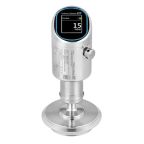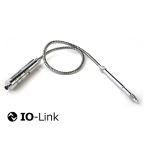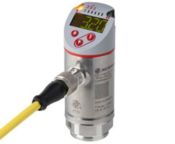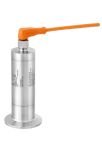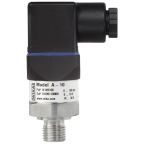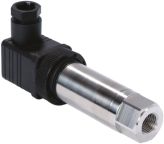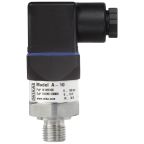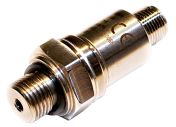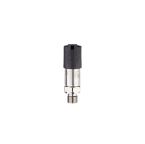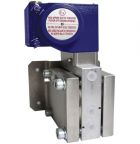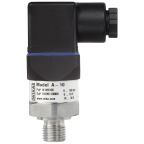Pressure Sensors
Pressure sensors are devices that sense the applied pressure of gasses or liquids. The output of the measurement is then converted into an electrical signal which reflects the amount of pressure applied.
How Pressure Sensors Work
There are various sensor technologies used within pressure sensor devices in the Philippines. Depending on the measurement requirements, this can influence their sensing accuracy and reliability. Pressure transducers leverage these technologies to convert mechanical displacement within the sensor into an electrical output signal, which is achieved through five different methods.
- Resistive Sensors: These types of pressure sensors use the change in electrical resistance of a strain gauge connected to the diaphragm.
- Capacitive Sensors: Are highly sensitive and are able to measure low pressure under 10 bar while still withstanding large overloads.
- Piezoelectric Sensors: These sensors use substances like Quartz to generate a charge on the surface when pressure is applied. Piezoelectric pressure sensors are ideal for measuring fast-changing pressures.
- Optical Sensors: These use interferometry to measure pressure changes in optical fiber. They are not disturbed by electromagnetic interference (EMI) and can be used in noisy or medical environments.
- MEMS (Micro-Electro-Mechanical Systems): Contains capacitive or piezo pressure sensing mechanisms on silicon at micron-level resolution.
Types of Pressure Sensors
Various properties can be used to classify the type of pressure sensor and its appropriate application, including the pressure range, operating temperature range, and the pressure type they measure. Additionally, these sensors adapt to measure the pressure of gasses, air, oil, water, and other liquids.
- Absolute Pressure Sensor: This type of sensor measures pressure relative to the perfect vacuum (zero reference point), making it an ideal air pressure sensor for applications requiring highly accurate atmospheric data like weather forecasting or altitude measurements.
- Gauge Pressure Sensors: These sensors, also referred to as relative pressure sensors, can be used to measure atmospheric pressure indirectly by using them as a reference point. They are especially effective as liquid pressure sensors in applications like monitoring liquid levels in open tanks, compensating for atmospheric pressure changes to ensure accuracy.
- Sealed Gauge Pressure Sensors: Similar to gauge pressure sensors, they measure pressure relative to a fixed pressure reference point instead of relying on the current ambient atmospheric pressure, which can vary. This makes them particularly reliable as gas pressure sensors for applications where equipment might be subject to changes in altitude or geographic location, maintaining consistent readings across varying conditions.
- Differential Pressure Sensors: These can be used to measure the difference between two different pressures (differential pressure), which can be connected to either side of the sensor. They are often used to measure pressure drops, fluid levels and flow rates. Among the applications of differential pressure sensors is the measurement of oil pressure in hydraulic systems, ensuring optimal operation and maintenance of equipment in industrial settings.
Each type of pressure sensor can measure pressure across a variety of applications. Moreover, they are integral to pressure transducers that convert these varied measurements into electrical signals, facilitating detailed monitoring and control across numerous applications.
Key Applications of Pressure Sensors
Pressure sensors are used in a wide variety of applications across many industries in the Philippines. These include medical, aviation, automotive and marine. Take a look at our comprehensive range of pressure sensors, many brought to you from industry leading brands including our very own, RS Pro.
- Medical: In medical devices like blood pressure monitors and ventilators, pressure sensors detect and measure changes in blood and airway pressure, converting these into electrical signals to provide precise, real-time patient data for diagnostics and treatment.
- Aviation: Pressure sensors control cabin pressure by measuring internal air pressure and adjusting it to safe levels. They also monitor altitude by detecting external atmospheric pressure changes, ensuring accurate altitude readings and safe flight operations.
- Automotive: In engine systems, oil pressure sensors are utilized to monitor the pressure of the oil circulating throughout the engine, providing data to the Engine Control Unit (ECU) for necessary adjustments to optimize performance. Meanwhile, Tire Pressure Monitoring Systems (TPMS) rely on sensors to detect tire pressure changes, alerting drivers to maintain proper inflation, thus enhancing safety and fuel efficiency.
- Marine: In marine applications, pressure sensors are used as water pressure sensors for depth sensing, calculating the pressure exerted by water to determine depth accurately. They also monitor hull stress by detecting pressure changes, helping to prevent structural damage and ensure the vessel's safety.
Purchasing Pressure Sensors in the Philippines
When buying pressure sensors in the Philippines, several key factors should be considered to ensure you select the most suitable device for your specific needs.
- Pressure Range and Sensitivity: Ensure the selected pressure sensor's range exceeds the highest pressure expected in your application to avoid sensor damage. Check the sensor's sensitivity specifications to guarantee it can accurately detect minimal pressure variations, which is essential for precision in critical monitoring and control tasks.
- Environmental Suitability: Consider the environmental conditions where the pressure sensor will operate. Ensure it can withstand temperature extremes, humidity, and potential chemical exposures to maintain performance and durability.
- Response Time and Accuracy: Verify that the sensor has a swift response time to capture rapid pressure fluctuations, which is crucial for dynamic applications. Additionally, confirm its accuracy specification aligns with your precision requirements to prevent errors and ensure reliable operations.
- Output and Connectivity: Select a pressure sensor with an output compatible with your monitoring systems, either analog or digital, to facilitate straightforward integration. Additionally, assess its connectivity features to ensure easy setup and reliable data transmission.
Why Choose RS for Pressure Sensors
As we've explored the intricacies of pressure sensors, their types, and key considerations for purchasing, RS Philippines stands out as your optimal choice for sourcing these devices. We offer a comprehensive range of pressure sensors in the Philippines, including versatile pressure switch sensors, to meet diverse application needs.
With us, you benefit from dependable products, a vast selection, and expert advice. Order your pressure sensors from RS today for precise measurements across various industry applications in the Philippines.
Additionally, you can check out our other measuring instruments like electric meters and water flow sensors, for comprehensive monitoring solutions. Shop our full range today!
Popular Searches
Related links
- Level Sensors
- SMC PF2W Series Flow Switch Flow Sensor for Air Liquid 5 L/min Min, 40 L/min Max
- Siemens QVE1901 Series Flow Switch For Use In Hydraulic System Flow Switch for Air Liquid, Water
- SMC PFMV5 Series Flow Switch Flow Sensor for Air Liquid 3 L/min Max
- SMC IFW5 Series Flow Switch Flow Switch for Air Liquid 1 l/min Min, 10 L/min Max
- SMC PF3W Series Flow Switch Flow Sensor for Air Liquid 2 L/min Min, 16 L/min Max
- SMC PF3W Series Flow Switch Flow Sensor for Air Liquid 10 L/min Min, 100 L/min Max
- SMC PFMB7 Series Flow Switch Flow Sensor for Air Liquid 10 L/min Min, 1000 L/min Max
